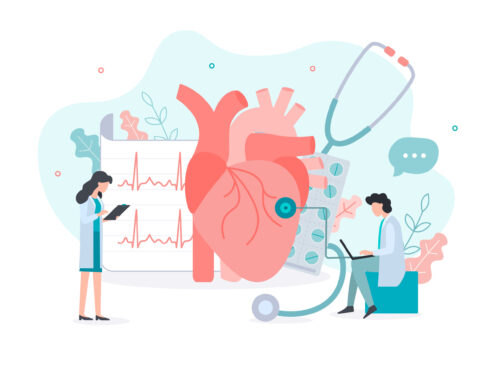February is American Heart Month

In the United States a heart attack is occurring every 49 seconds. According to the CDC, heart disease remains the leading cause of death in the United States for both men and women totaling over 655,000 lives lost each year.
Men, more so than women may have no symptoms with a “silent” heart attack. Many will have no forewarning until the actual event of a heart attack or heart failure occur.
Pain or discomfort in the chest is the most widely recognized symptom of a heart attack but doesn’t always present that way. Discomfort can be in the upper back, neck, or arm. Other symptoms like nausea and vomiting, extreme fatigue or shortness of breath can also be warning signs of a heart attack.
It’s important to know that some of the symptoms of heart disease can look like the flu or, more recently, like COVID-19. That’s why it’s important to know your family health history, your personal health risk, and what your body’s “normal” feels like so you can seek help when something just doesn’t feel right.
Women and Heart Disease
Despite increased awareness over the years, many don’t realize that heart disease is the still the leading cause of death for women in the US. One-in-five women will die from heart disease, which is more than breast cancer or other female cancers. Heart disease includes not only heart attack, but also heart failure, and heart rhythm disturbances.
What are the Symptoms of Heart Disease?
Women’s symptoms of heart attack often include extreme fatigue, nausea or vomiting, or indigestion-like discomfort. Just like men, women can also have the more recognizable chest pain that can be a heaviness, or sharp or radiating from chest, neck, or jaw and down the arm. If you have any of these symptoms, call 9-1-1 right away.
Life’s Simple 7 is the American Heart Associations suggestion to reduce your risk of heart disease.
- Manage your blood pressure, which is a major risk factor for heart disease and stroke. A healthy blood pressure reduces the strain on your heart. It’s important to have your blood pressure checked and know what your normal numbers are.
- Control your cholesterol, which can limit the plaque that clogs arteries leading to heart disease.
- Control your blood sugar. High blood sugar can damage your heart, kidneys, eyes, and nerves.
- Get moving. Physical activity helps control weight, increases circulation, and helps with stress management.
- Eat better. A healthy diet is the best weapon for fighting heart disease. Fresh fruits and vegetables, and less fat and processed foods will decrease your heart disease risk.
- Maintain or lose weight. Extra weight increases the burden on your heart, lungs, and joints.
- Stop smoking or don’t start smoking. Nicotine in tobacco constricts blood vessels which can limit blood flow.
Time is important
The heart is a muscle and needs oxygen to perform at its peak. When an artery in the heart is blocked by plague, blood flow decreases, and discomfort occurs due to lack of oxygen. Time is of the essence when identifying these blockages and moving toward getting the arteries opened and restoring blood flow to the heart muscle.
Cardiac catheterization is done to determine the extent and location of blockages and intervention is done to remove those blockages by stenting or other cath lab procedures. Early intervention is key to preventing heart muscle damage due to heart artery blockages.
Learn more about:
